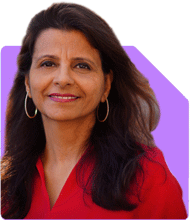Should 40-Year-Old Self-Employed Creative Professional with No Kids and Dependent Parents Surrender Endowment Policies?
Ramalingam Kalirajan |9189 Answers |Ask -Follow
Mutual Funds, Financial Planning Expert - Answered on Feb 07, 2025
He has an MBA in finance from the University of Madras and is a certified financial planner.
He is the director and chief financial planner at Holistic Investment, a Chennai-based firm that offers financial planning and wealth management advice.... more

So I have multiple Endowment policies of Tata Aia. The total Sum invested is about 15 lacs; if I surrender them all now, I will get about 9 lacs as Surrender Value. I am 40 now and don't have any other savings. Whatever I can save goes towards the premium of these policies now. I have about 6 years more to pay towards these policies.(for some 4 years) Kindly advise what I can do. It's me and my partner and we don't have kids. I have older parents who are partially dependent on me. I am afraid I will be unable to make wealth like my peers. My job is not high-paying since I am in the creative field and am self-employed with an annual income of about 8-12lacs per annum. I only have mutual funds worth 1 lac rupees apart from these savings. Besides this, I have a term insurance for 50 lacs and medical insurance for me and my wife for 50 lacs as well. I am afraid that I will not be able to accumulate as much wealth to beat inflation. Currently also on a rented house staying with my wife.
Existing Financial Position
Annual Income: Rs. 8-12 lakh
Endowment Policy Investment: Rs. 15 lakh
Surrender Value: Rs. 9 lakh
Mutual Funds: Rs. 1 lakh
Term Insurance: Rs. 50 lakh
Medical Insurance: Rs. 50 lakh (Self & Spouse)
Rental House: Staying with your wife
Parental Responsibility: Partial financial dependency
Limited Savings: Most go towards insurance premiums
Your current setup offers security but lacks efficient wealth growth.
The Problem with Endowment Policies
Returns are low compared to inflation.
You are locked into high premiums for years.
Your savings are not growing efficiently.
The surrender value is lower than your investment.
These policies do not support wealth creation.
You must exit these policies and redirect funds into better investment options.
What Should You Do?
Surrender Endowment Policies
Exit the policies and take the Rs. 9 lakh surrender value.
Stop further premium payments to free up cash flow.
Invest this amount in mutual funds for better returns.
Keep part of the funds in a liquid fund for emergencies.
Build a Better Investment Portfolio
Start a SIP in actively managed mutual funds.
Allocate across flexi-cap, mid-cap, and small-cap funds.
Gradually increase SIP contributions as income grows.
Avoid direct funds and invest through a MFD with CFP credentials.
Secure an Emergency Fund
Keep at least Rs. 3-5 lakh in a fixed deposit or liquid fund.
This will protect you from income fluctuations.
Do not use this for regular expenses.
Manage Parental Support and Household Expenses
Estimate medical and living expenses for parents.
Keep a separate healthcare fund for future medical needs.
Ensure they have health insurance coverage to reduce financial burden.
Plan for Wealth Creation
Increase investment percentage as income grows.
Keep a balance between growth and stability in investments.
Avoid unnecessary expenses and focus on long-term financial health.
Aim for an investment target of Rs. 2-3 crore in the next 15 years.
Managing Inflation and Future Expenses
Inflation will increase your living costs over time.
Your investments must outperform inflation for wealth creation.
Keep increasing your SIP amount every year by at least 10-15%.
Your goal should be to generate passive income from investments.
Should You Buy a House?
Your income is variable, making a loan risky.
A home loan will restrict investment potential.
Focus on building wealth first before buying a house.
Renting is better for flexibility and financial growth right now.
Finally
Your financial foundation is strong, but it needs restructuring.
Surrender endowment policies and redirect funds into mutual funds.
Build an emergency fund, invest consistently, and protect against inflation.
You can achieve long-term financial success with the right strategy.
Best Regards,
K. Ramalingam, MBA, CFP,
Chief Financial Planner,
www.holisticinvestment.in
https://www.youtube.com/@HolisticInvestment
You may like to see similar questions and answers below
Ramalingam Kalirajan |9189 Answers |Ask -Follow
Mutual Funds, Financial Planning Expert - Answered on May 03, 2024
Ramalingam Kalirajan |9189 Answers |Ask -Follow
Mutual Funds, Financial Planning Expert - Answered on Jun 20, 2025
Ramalingam Kalirajan |9189 Answers |Ask -Follow
Mutual Funds, Financial Planning Expert - Answered on Jun 21, 2025
Komal Jethmalani |396 Answers |Ask -Follow
Dietician, Diabetes Expert - Answered on Jun 24, 2025
Dr Dipankar Dutta |1628 Answers |Ask -Follow
Tech Careers and Skill Development Expert - Answered on Jun 23, 2025
Dr Dipankar Dutta |1628 Answers |Ask -Follow
Tech Careers and Skill Development Expert - Answered on Jun 23, 2025
Dr Dipankar Dutta |1628 Answers |Ask -Follow
Tech Careers and Skill Development Expert - Answered on Jun 23, 2025
Dr Dipankar Dutta |1628 Answers |Ask -Follow
Tech Careers and Skill Development Expert - Answered on Jun 23, 2025
Dr Dipankar Dutta |1628 Answers |Ask -Follow
Tech Careers and Skill Development Expert - Answered on Jun 23, 2025
Dr Dipankar Dutta |1628 Answers |Ask -Follow
Tech Careers and Skill Development Expert - Answered on Jun 23, 2025
Dr Dipankar Dutta |1628 Answers |Ask -Follow
Tech Careers and Skill Development Expert - Answered on Jun 23, 2025
Nayagam P P |6944 Answers |Ask -Follow
Career Counsellor - Answered on Jun 23, 2025
Nayagam P P |6944 Answers |Ask -Follow
Career Counsellor - Answered on Jun 23, 2025




















